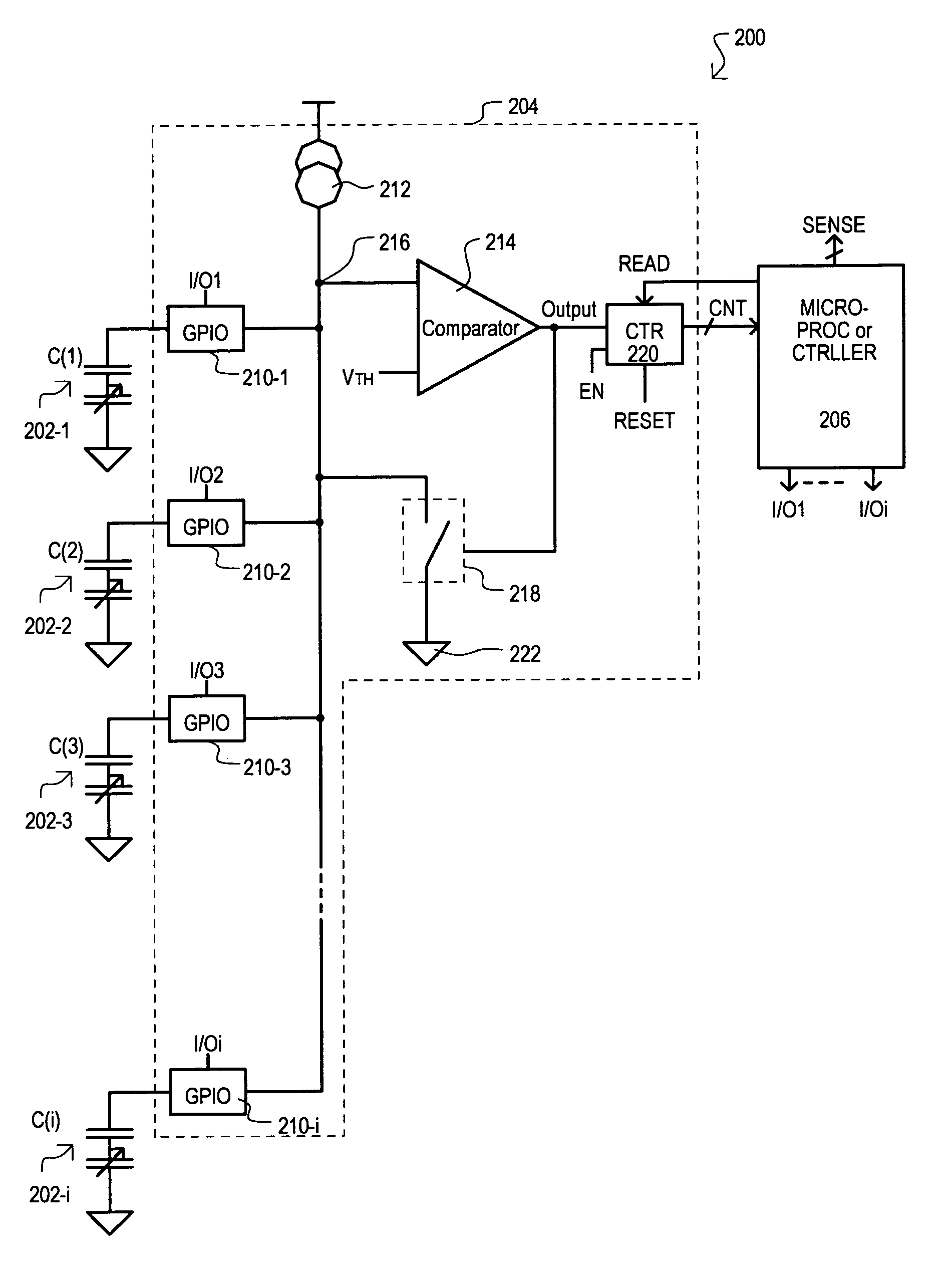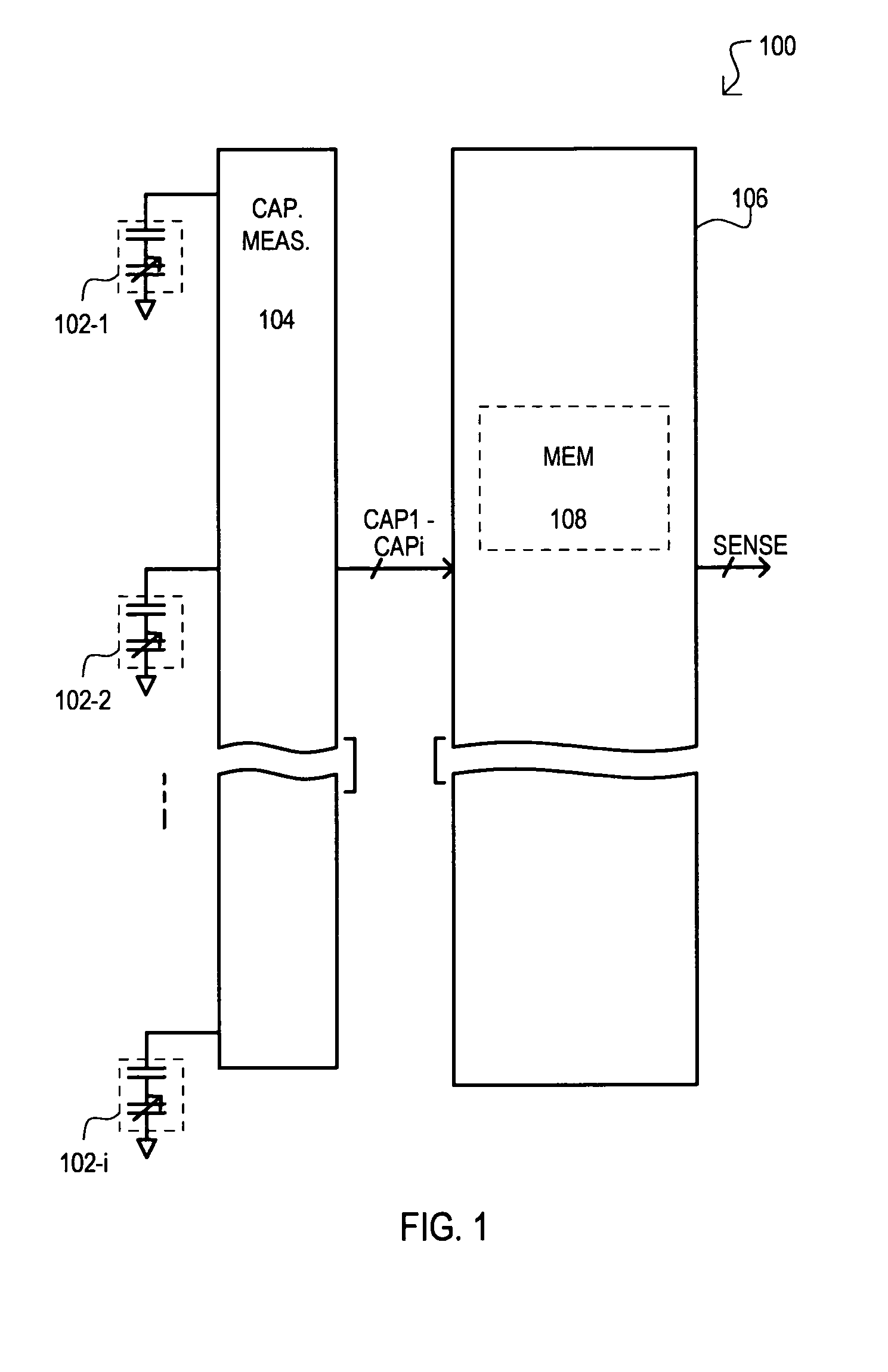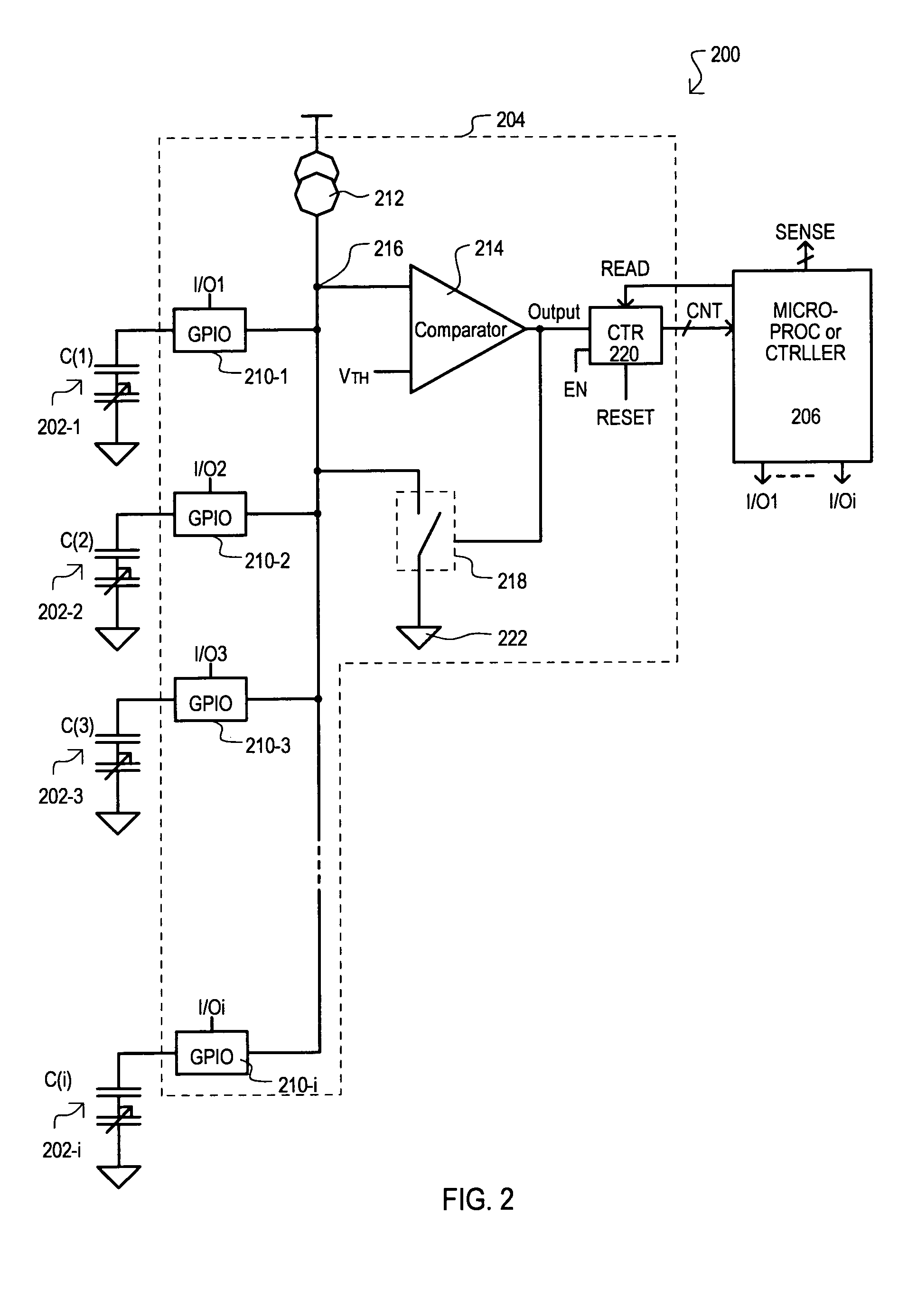Automatically balanced sensing device and method for multiple capacitive sensors
a capacitive sensor, automatic balance technology, applied in the field of electrical circuits, can solve problems such as non-uniform response, easy disturbance of imbalanced sensitivity, and circuits susceptible to invalid readings
- Summary
- Abstract
- Description
- Claims
- Application Information
AI Technical Summary
Problems solved by technology
Method used
Image
Examples
first embodiment
[0027]Referring now to FIG. 1, a system is shown in a block schematic diagram and designated by the general reference character 100. A capacitive sense system 100 can have inputs connected to a number of capacitive sensors 102-1 to 102-i. Each capacitive sensor (102-1 to 102-i) can have a capacitance that can vary depending upon mode of operation. More particularly, each capacitive sensor (102-1 to 102-i) can have a baseline capacitance that exists absent an input event. A baseline capacitance can be essentially constant, but can vary between capacitive sensors (102-1 to 102-i). In a run-time mode, each capacitive sensor (102-1 to 102-i) can be subject to an input event that can vary a resulting capacitance. As but one example, each capacitive sensor (102-1 to 102-i) can have a run-time capacitance that will drop in the event an object, such as a finger, is in close proximity to the sensor.
[0028]A system 100 can include a capacitance sensing section 104 and computation section 106....
second embodiment
[0037]Referring now to FIG. 2, a system is shown in a block schematic diagram and designated by the general reference character 200. A system 200 can include some of the same general sections as FIG. 1, thus like sections are referred to by the same reference character, but with the first digit being a “2” instead of a “1”.
[0038]In the embodiment of FIG. 2, a sensing section 204 can include a number of general purpose input / output (GPIO) cells 210-1 to 210-i, a current source 212, a comparator 214, a reset switch 218, and a counter 220. Each capacitive sensor (202-1 to 202-i) can be tied to a corresponding GPIO cell (210-1 to 210-i). Individual GPIO cells (210-1 to 210-i) can be connected to a common bus 216 in a multiplexer type fashion. GPIO cells (210-1 to 210-i) can each be controlled by corresponding I / O signals I / O0 to I / Oi.
[0039]Current source 212 can be connected to a common bus 216 and provide a current. Such a current can be constant current when making capacitance measur...
PUM
 Login to View More
Login to View More Abstract
Description
Claims
Application Information
 Login to View More
Login to View More - R&D
- Intellectual Property
- Life Sciences
- Materials
- Tech Scout
- Unparalleled Data Quality
- Higher Quality Content
- 60% Fewer Hallucinations
Browse by: Latest US Patents, China's latest patents, Technical Efficacy Thesaurus, Application Domain, Technology Topic, Popular Technical Reports.
© 2025 PatSnap. All rights reserved.Legal|Privacy policy|Modern Slavery Act Transparency Statement|Sitemap|About US| Contact US: help@patsnap.com



